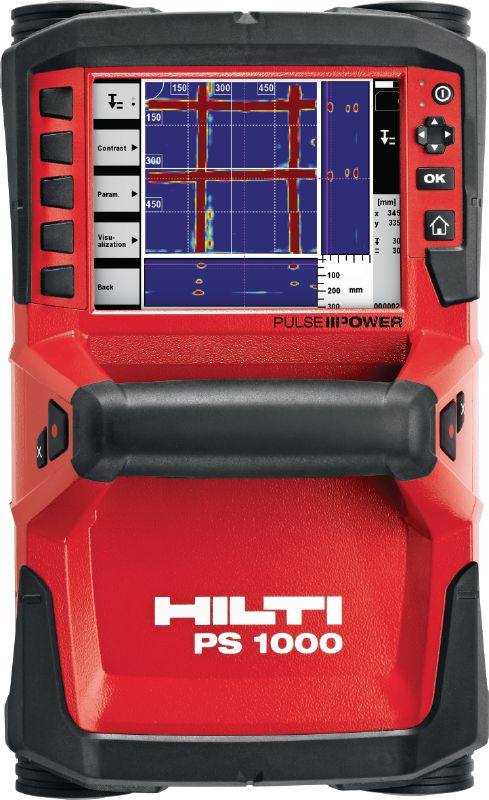Concrete Scanning: An Essential Step In The Direction Of Ensuring Architectural Stability and Security
In the world of construction and framework upkeep, the value of concrete scanning can not be overemphasized. By utilizing advanced technology and approaches, concrete scanning offers as an essential tool in making certain that the stability and safety of structures and bridges are upheld to the highest possible standards.
Significance of Concrete Scanning
Concrete scanning plays a critical role in ensuring the structural integrity and safety and security of buildings and framework jobs. By utilizing sophisticated innovations such as ground-penetrating radar (GPR) and electromagnetic induction, experts can non-destructively check concrete structures to discover possible problems, spaces, ingrained items, and reinforcement layout. This procedure allows very early detection of anomalies that could jeopardize the security of a framework, stopping costly damages and making sure the security of passengers.
Before boring, reducing, or coring right into concrete, scanning helps identify the exact places of rebar, post-tension cables, and other embedded components, lowering the risk of accidental hits that could lead to structural weaknesses. Furthermore, concrete scanning aids in top quality control by confirming the thickness of concrete covers and spotting any type of discrepancies that might impact the overall sturdiness of the framework.
Technology for Concrete Inspection

Advantages of Early Discovery
Timely discovery of structural issues can dramatically mitigate risks and ensure the longevity of building and construction tasks. By identifying prospective troubles at an early stage in the building and construction process, stakeholders can take positive steps to attend to concerns prior to they intensify into bigger and a lot more pricey problems. One of the crucial advantages of very early detection is the prevention of architectural failings, which can pose significant safety and security hazards and lead to project delays and monetary losses.
Furthermore, early discovery enables for timely fixings and upkeep, which can assist expand the life expectancy of the structure. By addressing issues without delay, building and construction teams can stay clear of expensive repairs and even the need for early replacement of architectural parts. This proactive strategy not only saves time and money yet also enhances the total safety read and security and sturdiness of the construction job.
Additionally, early detection can improve task planning and decision-making by offering stakeholders with valuable understandings right into the problem of the structure. Armed with this information, job managers can make educated selections regarding building and construction timelines, techniques, and products, leading to much more effective and effective job outcomes.
Making Sure Structural Security
Making sure the structural security of a building job is vital to its safety and long life. Concrete scanning plays a crucial role in ensuring structural stability by identifying prospective concerns such as spaces, delamination, or support rust that can compromise the honesty of the structure over time.
By making use of advanced scanning technologies like ground-penetrating radar (GPR) and electro-magnetic induction, building specialists can non-invasively check concrete frameworks to recognize areas of worry underneath the surface. This proactive method permits the early discovery of weaknesses or defects, check out this site enabling punctual repair work or reinforcement to stop architectural failings.
Normal concrete scanning during different construction phases and throughout the life cycle of a framework can help keep its stability, alleviate threats, and make sure the safety of passengers. By prioritizing architectural security through concrete scanning, building and construction jobs can enhance their strength and durability, inevitably adding to greater security and longevity.
Stopping Essential Failures
To secure versus devastating events, meticulous monitoring and positive upkeep are necessary in avoiding essential failings within architectural structures. Spotting prospective issues before they escalate is key to stop architectural failings. Implementing routine inspections, such as concrete scanning, can disclose covert flaws like gaps, fractures, or corrosion that could endanger the stability of a structure. By using sophisticated scanning innovations like Ground Permeating Radar (GPR) or Concrete X-ray, designers can non-destructively evaluate the problem of concrete and recognize powerlessness that require support or repair work - RainierGPR Service Areas.

Verdict
In conclusion, concrete scanning plays a crucial duty in making certain structural honesty and security by utilizing sophisticated modern technology for very early discovery of prospective concerns. This proactive method helps avoid important failings and ensures the security of frameworks. It is crucial to prioritize concrete assessment as a conventional technique to shield the durability and safety of buildings and facilities.
Concrete scanning plays an important duty in making certain the structural stability and safety of buildings and framework jobs. In addition, concrete scanning help in quality control by validating the thickness of concrete covers and spotting any type of disparities that may influence the total resilience of the framework. Concrete scanning plays an important duty in guaranteeing structural security by identifying prospective issues such as spaces, delamination, or reinforcement deterioration that can jeopardize the integrity of the structure over time.

In verdict, concrete scanning plays a vital duty in making sure structural honesty and security by using innovative modern technology for very early discovery of possible problems.